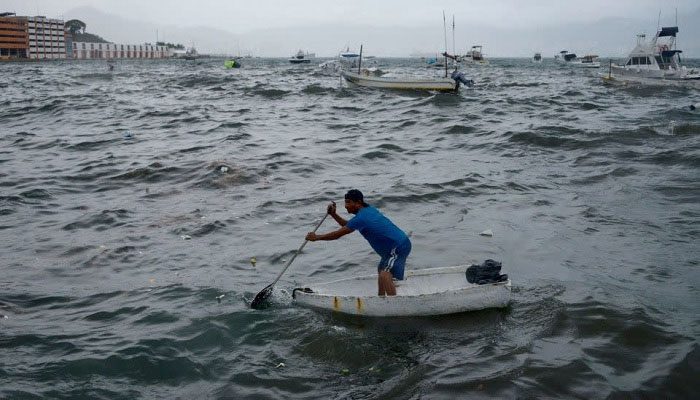In recent studies, scientists have proposed adding a new category or adjusting the existing levels in the hurricane classification system to better reflect the strength and danger of super hurricanes.
Scientists suggest adding a new level to hurricane classification because the risk of super hurricanes is increasingly significant due to the climate crisis.

Boats returning to shore to avoid Hurricane Hilary in Acapulco, Guerrero, Mexico, on August 16, 2023. (Photo: AFP/TTXVN)
According to a new study, hurricanes are becoming increasingly powerful, and the classification should be expanded to include a “Category 6” beyond the current categories of 1 through 5.
The Guardian (UK) reported that researchers stated that in the past decade, there have been five hurricanes that could fit into this new category, all of which have sustained wind speeds of 309 km/h or higher. The study indicates that such major hurricanes are becoming more likely due to global warming, affecting both the oceans and the atmosphere.
Scientist Michael Wehner at the Lawrence Berkeley National Laboratory in the United States mentioned that a speed of 309 km/h is likely faster than most Ferrari supercars. He and another researcher, James Kossin from the University of Wisconsin-Madison, have proposed the new “Category 6” hurricane classification. Their research has been published in a report by the National Academy of Sciences in the United States.
The commonly used hurricane scale is called Saffir-Simpson, developed in the early 1970s by engineer Herbert Saffir and meteorologist Robert Simpson, who once served as the director of the National Hurricane Center in the U.S.
The Saffir-Simpson scale classifies hurricanes with sustained wind speeds of 119 km/h or more as Category 1. Categories 3 and above include major hurricanes that pose a significant risk of severe damage to property and life. The strongest, Category 5, includes all hurricanes with wind speeds of 252 km/h or more.
Category 5 hurricanes have caused severe damage in recent years. For example, Hurricane Katrina in New Orleans (USA) in 2005 and Hurricane Maria in Puerto Rico in 2017. However, the new research suggests that there are now even more extreme hurricanes requiring a separate classification. These include Hurricane Haiyan, which resulted in over 6,000 fatalities in the Philippines in 2013, and Hurricane Patricia, which reached a maximum speed of 346 km/h when it formed near Mexico in 2015.
The climate crisis does not increase the total number of hurricanes, but researchers have found that the intensity of major hurricanes has significantly increased over the past four decades. An extremely hot ocean is providing additional energy to “add fuel to the fire” for hurricanes, along with a warmer, moisture-laden atmosphere.
Recently, many scales for extreme weather phenomena have been adjusted to adapt to the rapid changes of the modern era. The Australian Bureau of Meteorology has added a new color, purple, to its weather maps for extreme heat conditions. In January, the U.S. government’s Coral Reef Monitoring Program added three new types of alerts to account for the increasing thermal stress that corals are experiencing.
However, there are no signs that an official Category 6 hurricane classification will be established soon. The National Hurricane Center has not responded to requests for comments from the press regarding this new research.


















































